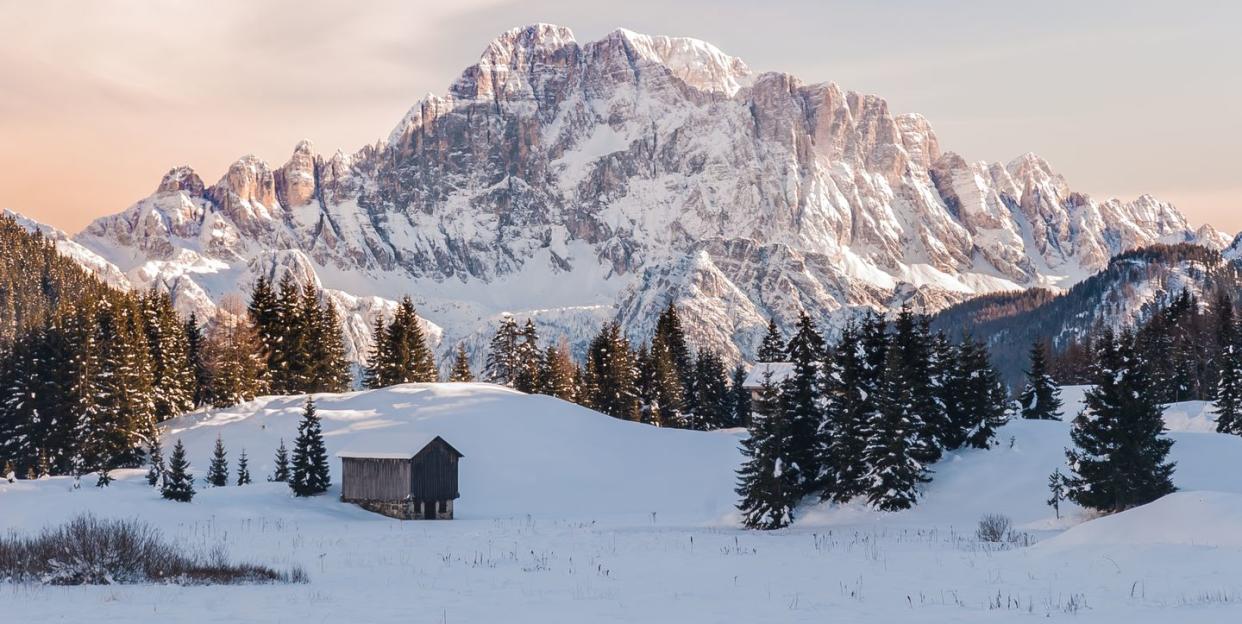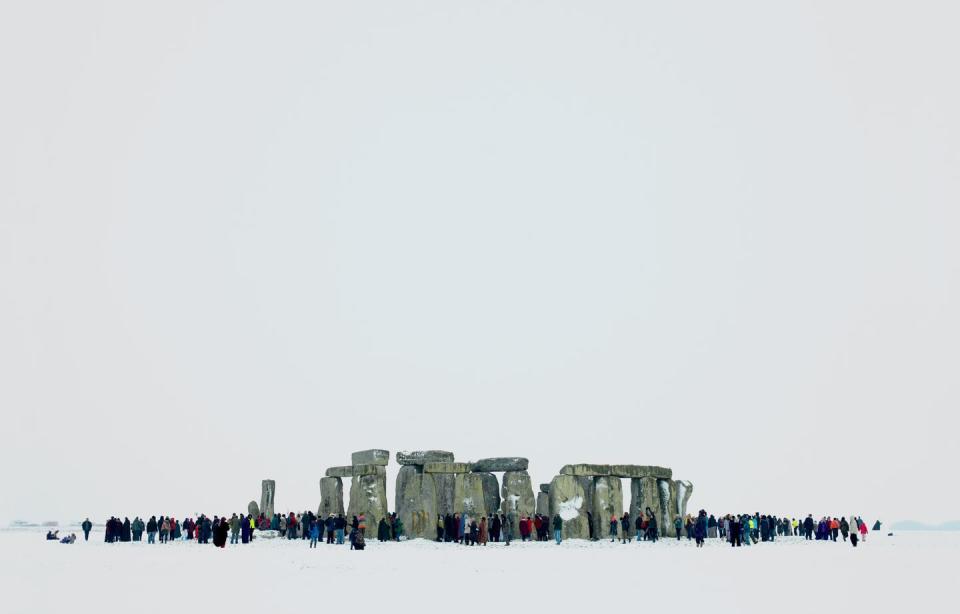The Winter Solstice Will Be Here Before You Know It

"Hearst Magazines and Yahoo may earn commission or revenue on some items through the links below."
We all have our ways of coping with the winter months, whether that's binging feel-good TV shows, baking up treats in the kitchen, or planning a warm weather getaway. But there's always some confusion as to when the first day of winter is—because in many places, temperatures typically drop to chilly lows long before the winter solstice arrives.
In the United States, the official start of the season happens on the winter solstice. Winter solstice 2021 will take place on December 21, albeit at different times across the country. It doesn't fall on the exact same date every year, but occurs on either December 21 or December 22 annually across U.S. time zones. Arriving a few days before Christmas, most people are long into their cold weather routines by then, and may not even realize that this December solstice is taking place.
As such, we've put together some facts about the annual event so you know when it happens in your area, what the phrase "winter solstice" means, and the difference between a solstice and an equinox.
Remind me, what is the winter solstice?
"The term 'solstice' comes from the Latin words sol (sun) and sistere (to stand still)," the Farmer's Almanac explains. "At the solstice, the angle between the Sun’s rays and the plane of the Earth’s equator (called declination) appears to stand still."
The winter solstice is an annual occurrence when the sun is at its southernmost point in the Northern Hemisphere, reaching the Tropic of Capricorn. The winter solstice is commonly known as the shortest day of the year, when there is the least daylight, and it means that the North Pole is farthest from the sun.
In the Southern Hemisphere, the winter solstice occurs on June 20 or 21.
The first day of winter is December 21, 2021.
Winter will come to the Northern Hemisphere on December 21 at 10:59 a.m. EST, per the Farmers' Almanac. That means it will take place at 7:59 a.m. PST, 8:59 a.m. MT, and 9:59 a.m. CST.
The solstice and the equinox are not the same thing.
Nope. In fact, according to Encyclopedia Britannica they are "sort of opposites."
Because the planet rotates on a tilted axis, different locations receive varying amounts of sunlight as the year progresses. The solstices mark the days at which the path of the sun travels farthest north or south from the earth's equator. This is why the winter solstice is the shortest day of the year and, conversely, the summer solstice is the longest day.
The equinoxes, which take place in March and in September, are the moments in the spring and fall where the sun is directly above the equator and daylight and nighttime are relatively equal.
Traditional winter solstice rituals have marked the occasion for centuries, and some continue today.
Historically, many cultures around the world have celebrated or acknowledged the importance of the winter solstice, and there is significant mythology around it. Per National Geographic, ancient Egyptians built the Temple of Karnak "in alignment with the winter solstice," and similar tributes can be found in Cambodia's Angkor Wat or Peru's Machu Picchu.
According to History.com, past celebrations of the winter solstice include Saturnalia, the celebration in ancient Rome that ultimately became a weeklong party with gambling, grand meals, and gift giving.
In China, Dong Zhi honors the solstice with traditional Chinese dishes being served, such as rice balls, and meat dumplings, while also being an occasion for families to gather. In contemporary Iran, as well as countries like Afghanistan and Tajikistan, Shab-e Yalda is celebrated on the solstice. A gathering for people to "protect each other from evil," it's connected to the solstice being the year's longest night. Shab-e Yalda, which means "Night of birth," includes wish-making, the eating of nuts and pomegranates, and reading poems, specifically by Persian writer Hafez.
In England, roughly 5,000 people gather at the site of Stonehenge each year for solstice celebration and to watch the sunrise, which is organized by local pagan and druid groups. In 2021, you can book a tour ticket, which boasts a "COVID-19 flexible policy for cancellations and refunds," to visit the site.

Even more gatherings occur in places like Scandinavia, with St. Lucia Day, which technically happens on December 13 (their traditional solstice day). It features large bonfires, ornate robes for young women, and sharing baked goods.
The beauty of the winter solstice is that you can acknowledge it however you want, whether that's by participating in a time-honored celebration or simply burrowing a little harder into your couch.
Want more stories to inspire you to live your best life? Sign up to become an Oprah Insider!
You Might Also Like

